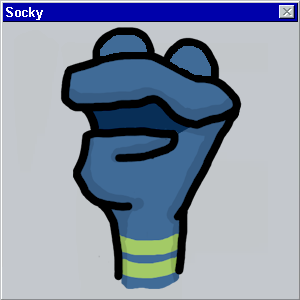Max Beckmann's Self-Portrait in Tuxedo
October 25, 2015 8:31 PM Subscribe
But even then, Beckmann will be there before you, and seem more at ease. And in how he stands and where he’s chosen to stand, it’s also clear that he can leave, that he can move out the door just to his right. Again, the sense that he belongs here, that he knows better than you how to dress and what to do, gives the impression that you aren’t an audience viewing him, but that he is giving you an audience instead.
He belongs, we don’t, or don’t so well as he.
Max Beckmann's 1927 Self-Portrait in Tuxedo, appreciated by Harvard art historian Joseph Koerner.
Another Beckmann self-portrait.
Paris Society, 1931.
Family Picture, 1920.
Self-Portrait with Champagne Glass, 1919.
Another Beckmann self-portrait.
Paris Society, 1931.
Family Picture, 1920.
Self-Portrait with Champagne Glass, 1919.
I dig this cat's style. What a time that must have been.
posted by rhizome at 2:07 AM on October 26, 2015
posted by rhizome at 2:07 AM on October 26, 2015
Then Hitler came to power in 1933, and institutions came under party control—especially institutions of culture, because the Nazis deemed their movement a cultural revolution. And at that moment, the enemy that had to be vilified and destroyed, in their view, was precisely the modern, modernist artist.
It is either a great achievement for an artist to be vilified for political gain. Or an epic fail:
It is especially needed when that work is The Mulatto, by Ernst Nolde, an artist who held political and racist views similar to those of the exhibit organizers, but who was (to his complete surprise) vilified by them and exhibited as an enemy.
posted by three blind mice at 2:42 AM on October 26, 2015
It is either a great achievement for an artist to be vilified for political gain. Or an epic fail:
It is especially needed when that work is The Mulatto, by Ernst Nolde, an artist who held political and racist views similar to those of the exhibit organizers, but who was (to his complete surprise) vilified by them and exhibited as an enemy.
posted by three blind mice at 2:42 AM on October 26, 2015
Max Beckmann paintings were made to be seen in person.
You can say that about pretty much all art, really, But, yeah, Beckman is definitely best seen in-person.
posted by Thorzdad at 6:39 AM on October 26, 2015
You can say that about pretty much all art, really, But, yeah, Beckman is definitely best seen in-person.
posted by Thorzdad at 6:39 AM on October 26, 2015
Thanks, that essay is really interesting and taught me a lot.
> Max Beckmann paintings were made to be seen in person.
As Thorzdad said, all (good) paintings are. I never appreciated Rothko until I saw a retrospective at MOMA, and I didn't really appreciate Picasso or Mondrian until I saw their works in person. Reproductions are like translations: essential, but inherently and hopelessly inadequate.
posted by languagehat at 9:43 AM on October 26, 2015
> Max Beckmann paintings were made to be seen in person.
As Thorzdad said, all (good) paintings are. I never appreciated Rothko until I saw a retrospective at MOMA, and I didn't really appreciate Picasso or Mondrian until I saw their works in person. Reproductions are like translations: essential, but inherently and hopelessly inadequate.
posted by languagehat at 9:43 AM on October 26, 2015
Great essay, thank you. This painting is so iconic; I first saw it in some art book when I was in high school and it's always stayed with me. I never knew it was explicitly a political prescription for a united Europe, wow.
posted by LobsterMitten at 7:58 PM on October 26, 2015
posted by LobsterMitten at 7:58 PM on October 26, 2015
« Older How do a bunch of wonky generated tones translate... | It's Autumn on Arrakis Newer »
This thread has been archived and is closed to new comments


Max Beckmann paintings were made to be seen in person.
posted by notsnot at 8:43 PM on October 25, 2015